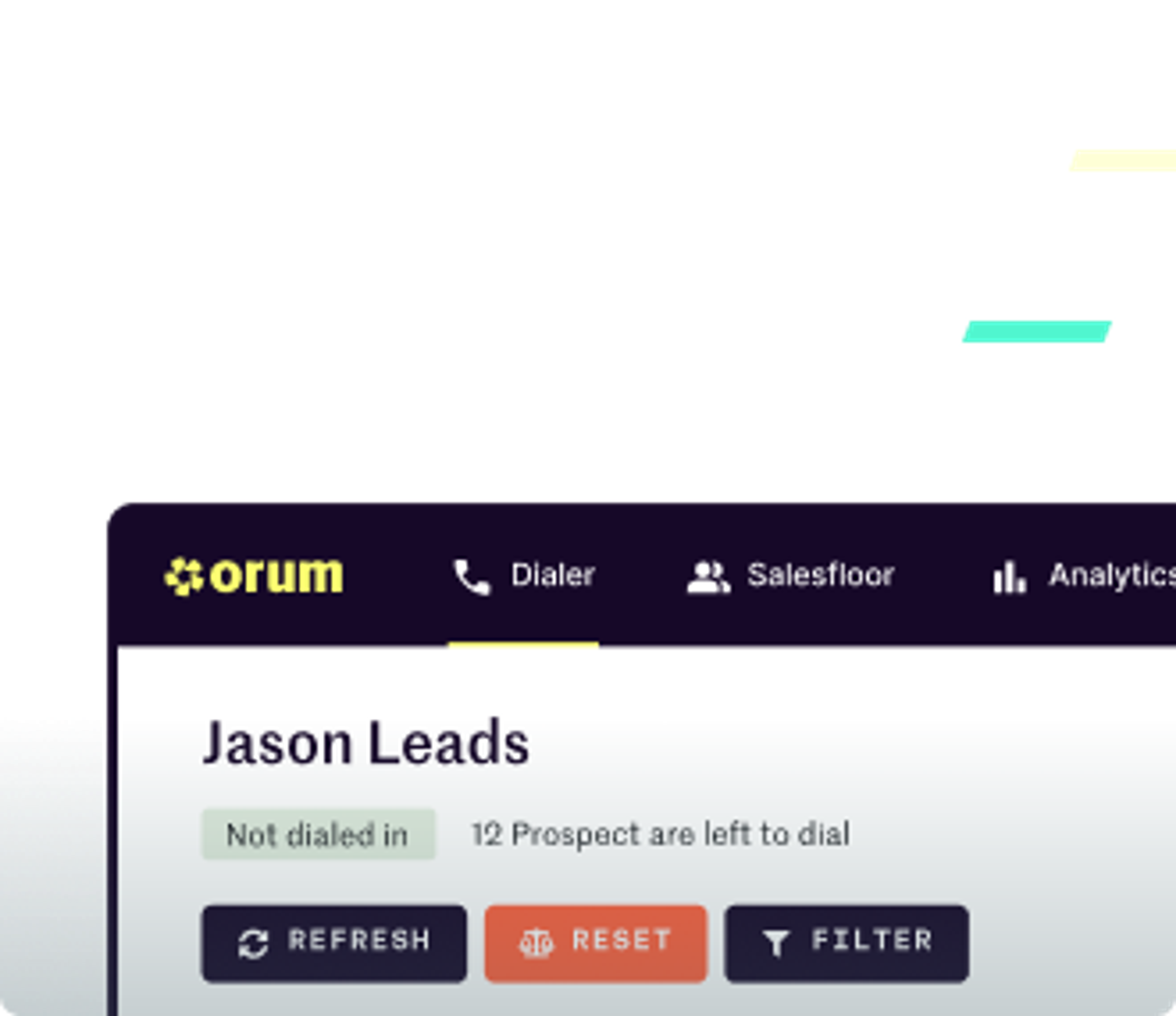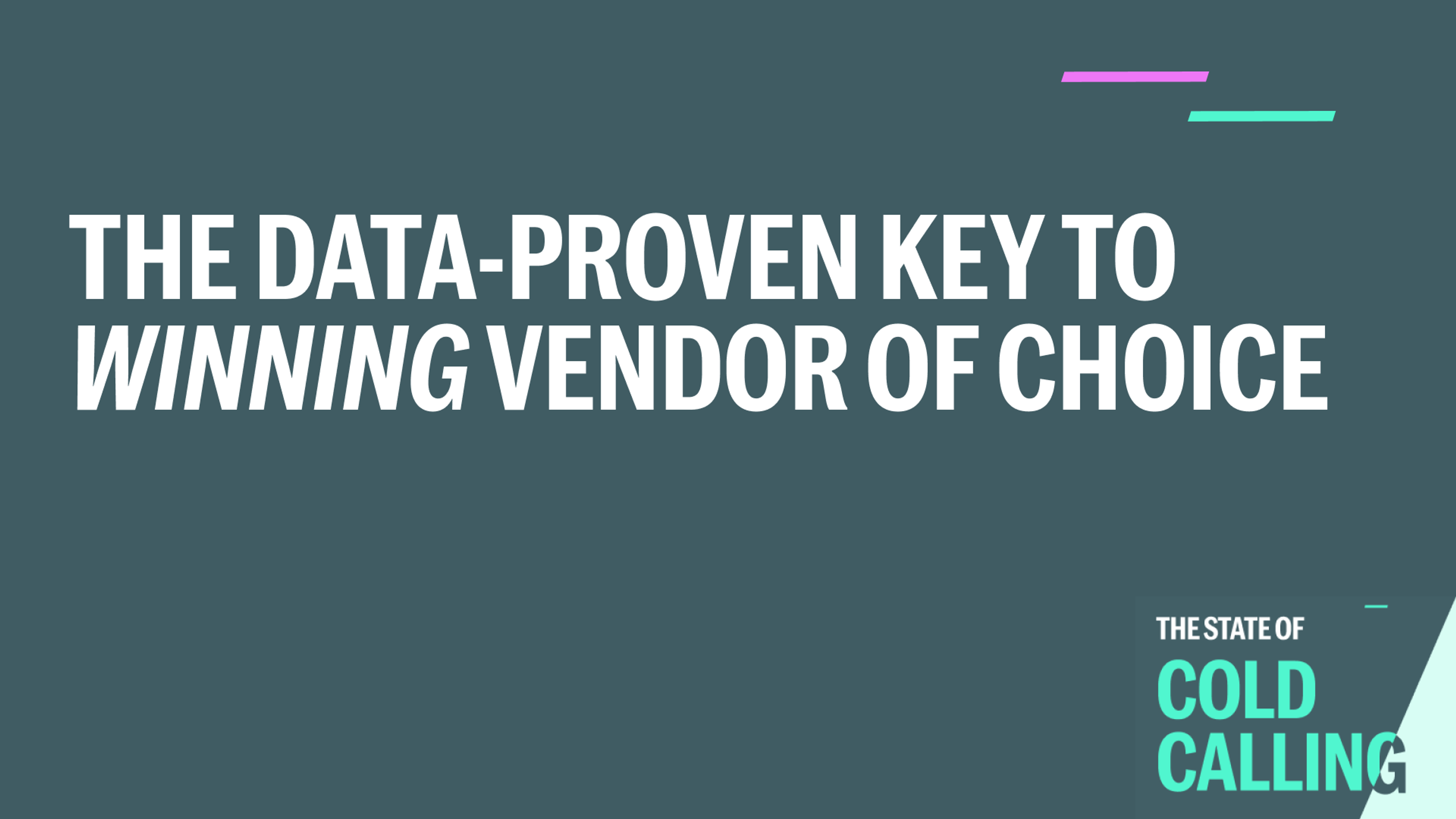How Defining ‘Great’ With Custom AI Scorecards Led to 30% Better Close Rates and 5× More Meetings.


What if every rep on your team performed like your top 10%? Imagine that energy on your sales floor, consistent wins, confident conversations, and a pipeline that grows without simply adding more calls.
That’s not fantasy. It’s what happens when you define what “great” really sounds like and teach your AI to measure it.
At Orum, the teams that followed this exact framework saw 30% better close rates and 5 times more meetings booked — the same connections, smarter coaching.
Here’s how they did it (and how you can too).
1. Start by listening to your top performers
Before you can scale greatness, you need to understand it. Start by identifying your true top performers — not the ones who just make the most dials, but the ones who convert the most connects into meetings and pipeline.
At Orum, we define top reps as efficient operators, not activity monsters. They’re the ones who move deals forward with fewer calls because they’ve mastered how they sell. Use your CRM or Orum’s analytics to surface those patterns. Look at booked meetings, pipeline generated, and behavioral consistency across their calls.
You can automate this step by using Orum’s own analytics filters to isolate those top performers’ calls automatically. Then, download the recordings or transcribe them and plug the text into your favorite AI tool, such as ChatGPT, Claude, or Glean, to conduct analysis.
Once you’ve identified your top reps, pull a sample of 10–20 of their recent calls. Then, listen not just for what they say, but how they say it:
- How do they open the conversation?
- How do they handle resistance or pivot back to value?
- When do they transition from rapport to discovery?
- What tone, pacing, and phrasing create energy on the other end?
Those reps become your living definition of “great.” And once you’ve defined what “great” sounds like, everything else becomes exponentially easier to scale.
Step 2. Identify positive trends
Once you’ve gathered your samples, look for repeatable patterns across your best calls. You’ll start to hear consistency in how top reps set context, ask questions, and handle tension.
Write these down, they’ll become your first round of criteria.
Your goal isn’t to copy your best reps verbatim; it’s to extract the behaviors and decisions that make their success repeatable.
At Orum, our top reps consistently: Frame Orum as an AI Coaching and Calling platform, not just a dialer. Naturally weave in Call Deliverability and Call Coaching as the twin engines of our differentiation. Handle compliance with confidence, referencing our trust portal and never over-promising. Those repeatable moments became the foundation of our “AI Narrative” and “Compliance Response” custom sections — two criteria that now live in every scorecard we use internally.
Step 3: Compare to the Middle, Find the Gaps That Matter
Once you’ve defined what “great” sounds like, it’s time to find the delta — the difference between what your best reps do and what everyone else misses.
When we ran this analysis at Orum, one pattern stood out more than any other: Top reps actually ask for the meeting.
It sounds simple, but it’s the single biggest gap we saw across hundreds of calls. Our best reps made clear, confident asks, and they guided the conversation to the next step. While others often danced around it or ended with polite rapport that went nowhere.
The top rep owns the close, asks with confidence, and assumes the next step. That simple behavioral shift is what turned an average connect into a booked meeting.
When you identify the micro-behaviors that make or break conversions, you can turn them into measurable criteria on your AI Scorecards and coach them consistently.
Step 4: Translate Patterns Into Measurable Behaviors
You’ve listened, spotted the delta, and now you know exactly what separates your top reps from everyone else.
The next step? Turn that knowledge into criteria your AI can score, and your reps can actually improve on. This is where most managers fall short. They know what “great” sounds like, but they can’t operationalize it.
With Orum’s Custom AI Scorecards, that’s now the easiest part.
Here’s a direct example of a custom category to judge if reps are adhering to our “golden talk track” for Orum’s compliance response.
Conclusion: Define It, Measure It, Scale It
The best sales teams don’t just find what great looks like, they keep redefining it.
Custom AI Scorecards are a living system that should evolve with your team. What worked last quarter may not be effective this time, so review and update your scorecards at least quarterly, if not monthly.
Sales success isn’t static. The teams that grow fastest listen, learn, and adapt.
With Orum, it takes minutes to define, measure, and refine what “great” sounds like.
Listen to your top reps, identify the gaps that matter, turn them into measurable behaviors, and continue to improve.
Define “great,” teach it to your AI, and evolve it as your team does.
Goal: Assess how effectively the rep addresses compliance-related questions or objections (e.g., “Are you compliant?”, “Do you record calls?”).
5 – Excellent (Golden Standard)
Rep delivers The Golden Answer or a polished equivalent:
“I can send you a link to our Trust Portal — trust.orum.com — which details all our certifications and functionality.”
Highlights Orum’s proactive approach to compliance and security, uses compliant phrasing, and references the Trust Portal confidently. Maintains control, smooth tone, and transitions naturally back to discovery or next steps.
4 – Strong
Generally follows the framework but misses a minor element (e.g., omits Trust Portal mention). Maintains safe phrasing and confident tone, handles objections clearly, and redirects smoothly to next steps.
3 – Acceptable / Needs Refinement
Addresses compliance but incompletely or with uncertainty. May over-explain or omit key elements. No risky statements, but lacks polish or confidence.
2 – Poor / Off-Message
Responds vaguely or inaccurately. Uses risky or unclear phrasing that could imply legal guarantees. Doesn’t reference the Trust Portal or redirect the conversation, creating confusion or risk.
1 – Non-Compliant / Risk
Makes legally risky or incorrect statements, speaks for the customer’s compliance, or contradicts policy. Fails to show product knowledge or control. No attempt to reference Trust Portal or deflect properly.





